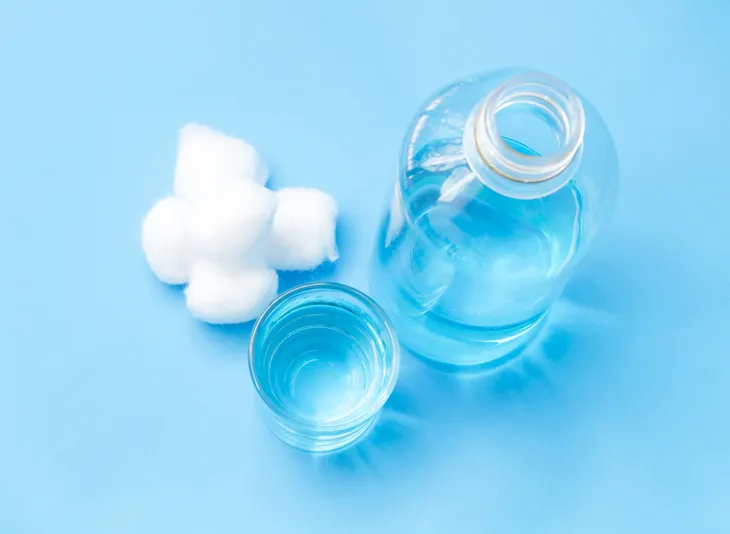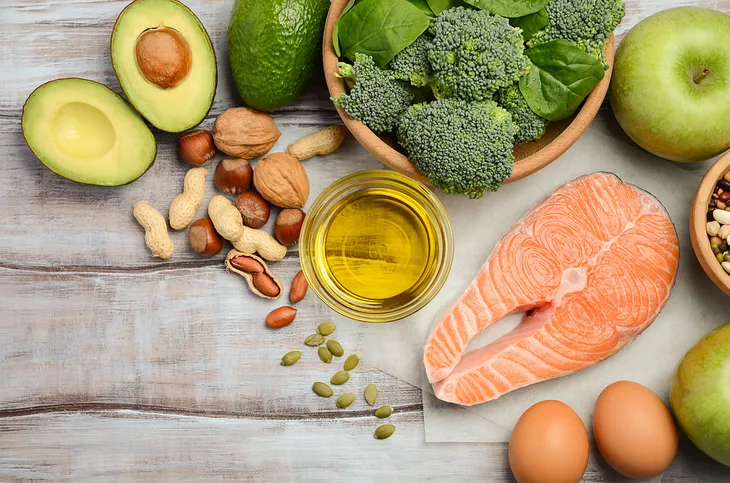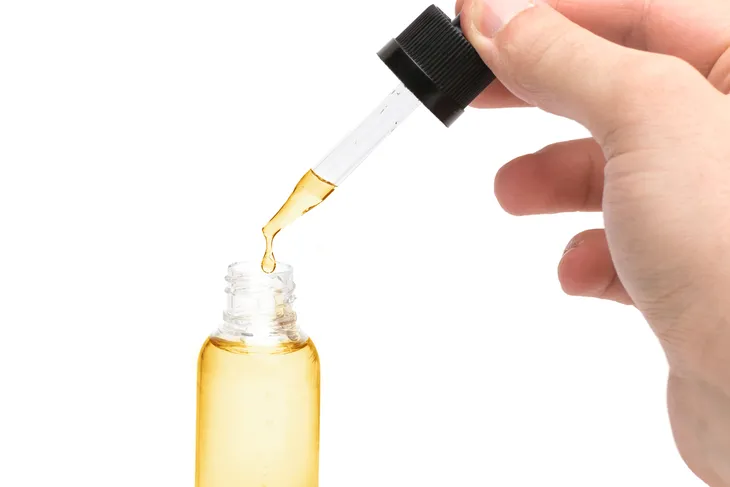Do you ever get that weird feeling like something’s about to leak out of your ear? Chances are you’ve developed a little extra cerumen, a natural substance more commonly referred to as “earwax.” Cerumen is produced by ear glands and is designed to lubricate and protect the ears against bacteria and other external agents. In essence, it’s good for you and produced by your body for good reason.
However, earwax buildup can be annoying, which is why so many of us use cotton swabs and Q-tips to root it out. The trouble with that practice is that strategy often forces earwax deeper into the ear, causing dangerous blockages. Luckily, there are other safer ways to reduce earwax. But before you try any of these methods, make sure you talk to your doctor first.
Saltwater
Saltwater is widely considered the best and most natural way to remove excess earwax. A saltwater spray has the basic components required to soften earwax and cause it to run out the ear, reducing buildup and preventing annoying blockages.
To clear out ear wax using saltwater, mix a teaspoon of salt in a half cup of warm water. Next, dab a cotton ball in the saline solution. Finally, squeeze the mixture into your ear while tilting your head. Hold the position for a couple of minutes before turning your head back and allowing the solution to drain out.
Hydrogen Peroxide
Many of us have hydrogen peroxide in our bathroom cabinets because it serves a variety of purposes, most commonly cleaning out minor cuts. But it can do a lot more than that. In fact, it’s a great tool for clearing out excess cerumen or ear wax.
To use this method, mix an equal amount of hydrogen peroxide and water. Next, fill an ear dropper with the created solution. After tilting your head, use the dropper to place the solution in your ear. Wait a few minutes and then allow the solution to drain out before using a clean towel to clear away excess earwax.
Baby Oil
Like many of the other items on this list, baby oil serves many purposes—it can be used for anything from moisturizing skin to massaging a loved one. But, chances are, you weren’t aware that it can actually help reduce excess earwax.
To use this method for removing cerumen, fill an ear dropper with baby oil. Tilt the head so that the affected ear is pointing skyward and place the drops in that ear. Hold for a few minutes before returning your head to the usual position. Be sure to use a towel or Kleenex to wipe away the excess earwax. If you don’t have baby oil, try almond oil or olive oil.
Vinegar and Rubbing Alcohol
These two ingredients are pretty popular household items that you probably already have sitting in your cabinet. Most of us keep vinegar in the kitchen and some rubbing alcohol in the bathroom cabinet. Rarely do we ever think about combining the two, but we’re here to tell you that they can be combined to create an effective earwax removal tool!
To use this method, mix an equal amount of vinegar and rubbing alcohol. Soak up the solution with a cotton ball and squeeze a few drops into the affected ear. Keep the affected ear pointed upwards for a few minutes before removing excess earwax.
Warm Water
This may not be the most effective solution, but simple, straightforward warm water can actually help reduce excess ear wax. The trick is to only use clean and filtered water—doing otherwise could potentially result in an ear infection.
While you could just take a shower, other effective methods include using a rubber ball syringe filled with warm water. You’ll need a partner for this one who will drip the warm water slowly into the ear. Medical News Today warns not to forcefully flush the water into the ear canal because this can cause dizziness. Wait 10-minutes and then tilt your head the other way to let the fluid and earwax drip out. This process might need to be repeated several times. You can also dab a cotton ball in warm, clean water and place droplets in the affected ear. Hold for a few minutes and then wipe away excess ear wax.
Baking Soda
We all know baking soda is great for science project volcanoes and keeping the refrigerator smelling fresh, but baking soda also offers an excellent way to remove excess earwax. Simply create a water-based solution that’s 10-percent baking soda, 90-percent H20.
After mixing the solution, use a cotton swab to place a few drops in the affected ear. After holding the head tilted for a few minutes, wipe away the excess earwax using a Kleenex or towel.
Omega-3 Fatty Acids
You’ve probably heard that foods high in omega-3 fatty acids are good for your heart, brain, and other parts of your body. But you might not know that these foods—like salmon, avocados, flaxseed, sardines, mackerel, and walnuts—are also great for lowering earwax levels.
If you’re not a fan of any of these foods, try taking a high-quality omega-3 fatty acid supplement. These can usually be found at the local grocery store or pharmacy.
Coconut Oil
Coconut oil is super versatile, so if you don’t already have this product in your home, you should invest in it! One of its many uses is to help clean ears. “It contains medium-chain fatty acids similar to sebum, and hence can be used without any worry. As it is also natural and effective against microbes, it lowers the risk of any infection,” writes StyleCraze. “It may actually kill a wide range of harmful bacteria that accumulate due to the wax build-up.”
You’ll need 1-tablespoon of coconut oil for this method and a dropper. First up, warm the coconut oil slightly, and then put it in an ear dropper. Do a few slow drops in the affected ear and let it sit for 10-minutes. When the time is up, tilt your head sideways and remove the melted earwax, says StyleCraze. If you find that you’re still suffering from an earwax buildup, you can repeat the process.
Almond Oil
Similar to coconut oil and baby oil, almond oil works to soften up the earwax and lubricate the ear so that the earwax comes out more easily. “Almond oil is another lubricant that assists in the elimination of earwax,” writes StyleCraze. “The almond oil softens the wax and makes it easy to remove.”
All you need for this method is some almond oil and a dropper. Fill the dropper with almond oil. You don’t have to heat this one up, room temperature is fine. And use it the same way you’d use coconut oil. Put a few slow drops into the affected ear, let it sit, and tilt the head sideways. You can repeat this process as much as needed.
Apple Cider Vinegar
Like coconut oil, apple cider vinegar also has many uses that span outside the kitchen. One these many uses is to help clean out earwax. “The antibacterial and anti-fungal properties of apple cider vinegar come into use to deal with any harmful microbes that may be residing in your ear canal,” writes StyleCraze. “The mild acidity of this solution will dissolve the earwax and remove it.”
Create a mixture that is one part apple cider vinegar and one part water. Mix the two together and use it as a solution to flush out the ear. This is similar to irrigation which we will get to next. Similar to all the other techniques, you can repeat this process as many times as needed.
Olive Oil
Another common household kitchen ingredient is olive oil. While we normally use it for cooking, olive oil can also be used for some simple remedies, like cleaning out excess earwax. Food NDTV explains that olive oil, similar to the other oils on this list, can “line the ear membranes, protecting your ear from water-causing infections.” It also helps soften the earwax making it easier to cleanout. “With its antiseptic properties, it also aids in fighting ear infection,” writes the source.
To use olive oil as an ear cleaner, warm it up slightly and then fill some up in a dropper. Put in three to four drops. Let it settle for about 10-minutes so that the earwax has time to soften, and then tilt your head sideways and remove the oil and earwax with a Q-tip.
Irrigation
We already talked about this method in the slide about using warm water, but basically, irrigation works to flush out the ear because there are times when earwax gets too built up. You can remove it by creating light pressure with water flushing. Healthline suggests purchasing a rubber bulb that is made specifically for ear cleaning. Fill it with warm water, tilt your head sideways and put a towel or basin below the ear. You’ll need to enlist some help for this technique as someone will have to gently squeeze warm water into your ear. “Allow the water to run down into the towel or basin. You may even do this over a bowel so that you can see if any visible pieces of earwax fall out,” writes the source.
Healthline says irrigation can be combined with other methods on this list, and for the best results, do irrigation for 5 to 15 minutes after using baking soda, hydrogen peroxide, or oil.
Glycerin
Glycerin is a common ingredient in many over-the-counter ear drops. “Many earwax drops used as softeners have glycerin in them as an active ingredient,” writes StyleCraze. “Glycerin is moist and an effective lubricant. It is also safe to be used at home.”
Similar to the other methods on this list, put some glycerin in a dropper, let it sit for a few minutes. Then tilt the head and let it remove any melted earwax. Repeat this process for a day or two until you find some relief.
Paraffin Oil
Paraffin oil works just like all the other oils on this list, but it’s not as common as the others, so you might have to run out and buy this one. It helps cleanse the ear and soften the earwax. “The ear canal cleanses itself. But, at times, the accumulation of excess earwax causes discomfort and pain. Paraffin oil softens the earwax and helps in its easy removal,” writes StyleCraze.
Warm the paraffin oil slightly and put it in a dropper. Add a few drops to the infected ear, tilt the head and let it drain away. Afterward, you should flush the ear with warm water. Follow this process for a few days until the pain and discomfort subside.
Garlic Oil
Yet another oil! Garlic oil is different from the others on this list because it’s specifically for any ear blockages that cause pain. “Garlic contains allicin, which makes it a natural antibiotic. Allicin fights off any inner or middle ear infections and helps fight the pain,” writes StyleCraze. “The oil will work on the stiff wax, and the garlic will eliminate any lurking infection. In this way, you will be able to combat the pain as well.”
The only downside of this method is that it requires much more prep. You’ll need 3 or 4 garlic cloves, 3-tablespoons of olive oil or coconut oil and one cotton ball. To create the solution, heat the crushed garlic cloves and some oil in a small pan until the cloves turn black. When this happens, turn the heat off and allow it to cool. When the oil is finally at room temperature, remove the cloves and use the oil to clean the ears. Do this by soaking a cotton ball in the oil, tilt the head sideways, and let some of the oil drop into the affected ear. You can also rub some of the oil around the ear. Let it sit for a few minutes and then tilt your head in the opposite direction to let it drain.


















